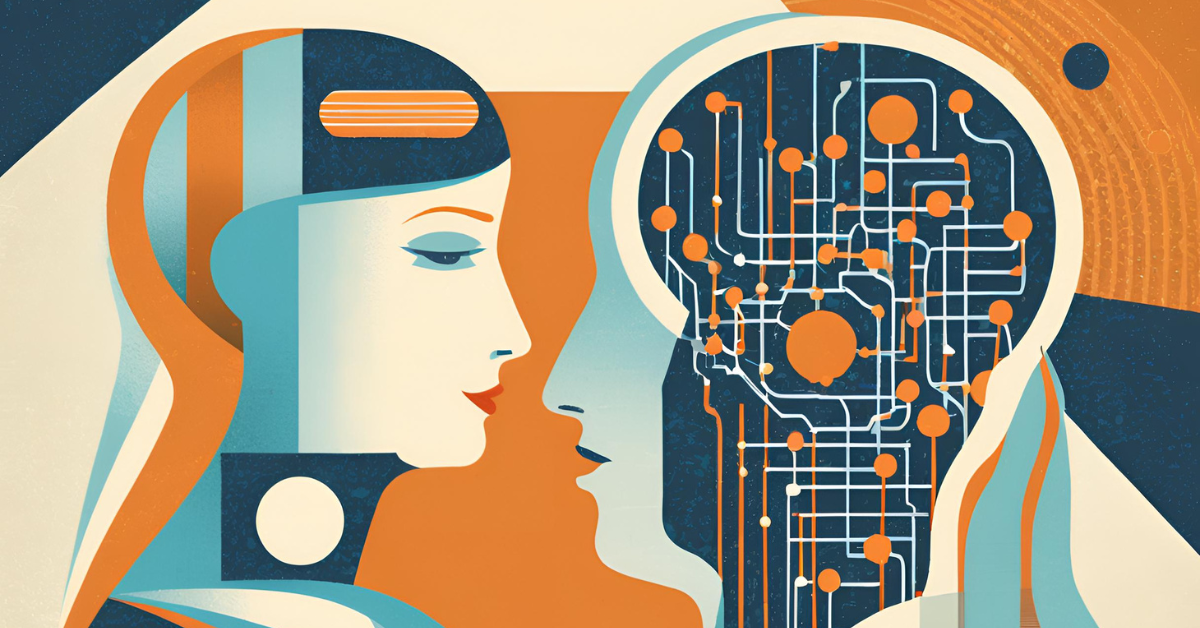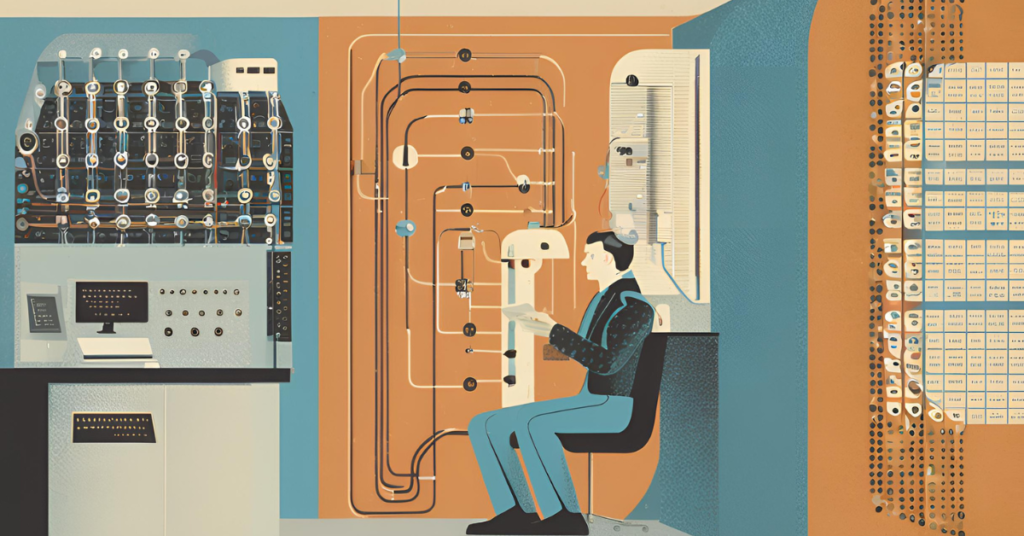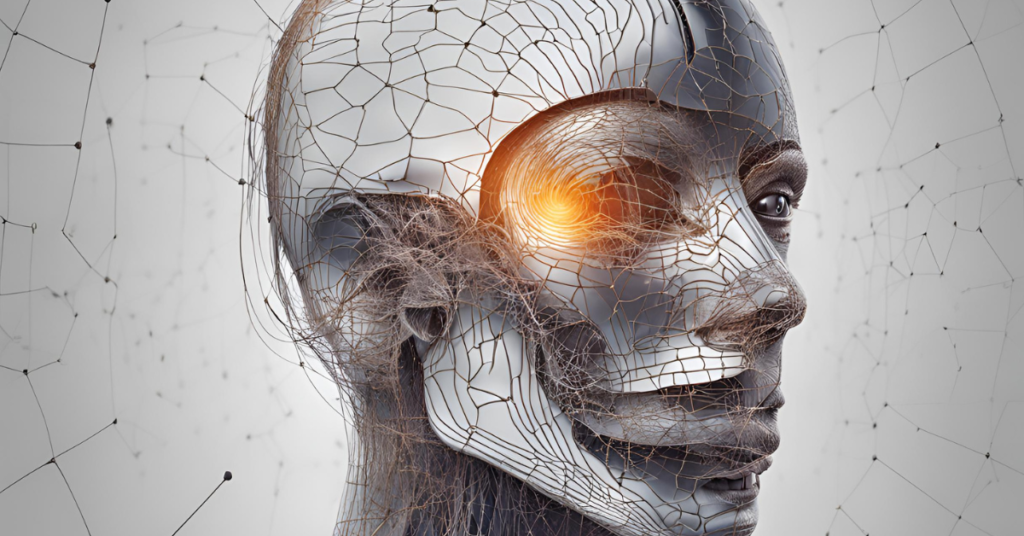
Let’s Discover the world of Artificial Intelligence (AI), its types, applications, and future potential. Understand how AI impacts various industries and society as a whole.
| Topics | Subtopics |
|---|---|
| Introduction to Artificial Intelligence | Overview of AI, Historical Context, Importance of AI |
| What is Artificial Intelligence? | Definition, Key Components, AI vs Human Intelligence |
| Types of Artificial Intelligence | Narrow AI, General AI, Superintelligent AI |
| Narrow AI | Examples, Applications, Limitations |
| General AI | Definition, Research Areas, Potential |
| Superintelligent AI | Concept, Hypothetical Scenarios, Ethical Considerations |
| Machine Learning | Overview, Types of Learning, Applications |
| Supervised Learning | Definition, Examples, Use Cases |
| Unsupervised Learning | Definition, Examples, Use Cases |
| Reinforcement Learning | Definition, Examples, Use Cases |
| Deep Learning | Definition, Neural Networks, Applications |
| Natural Language Processing (NLP) | Overview, Applications, Challenges |
| Computer Vision | Overview, Applications, Challenges |
| Robotics and AI | Overview, Applications, Future Trends |
| AI in Healthcare | Medical Imaging, Drug Discovery, Personalized Medicine |
| AI in Finance | Fraud Detection, Algorithmic Trading, Personal Finance Management |
| AI in Education | Adaptive Learning, Administrative Applications, Challenges |
| AI in Transportation | Autonomous Vehicles, Traffic Management, Logistics |
| Ethics of Artificial Intelligence | Bias, Privacy, Accountability |
| AI and Job Market | Automation, Job Creation, Skills for Future |
| Future of Artificial Intelligence | Predictions, Opportunities, Challenges |
| AI Research and Development | Key Institutions, Current Trends, Future Directions |
| AI and Society | Social Impact, Public Perception, Regulations |
| AI and Creativity | AI in Art, Music, Writing |
| AI Tools and Platforms | TensorFlow, PyTorch, OpenAI |
| Challenges in AI Development | Technical Challenges, Ethical Challenges, Regulatory Challenges |
| AI and Cybersecurity | Threat Detection, Defense Mechanisms, Challenges |
| AI in Everyday Life | Smart Homes, Virtual Assistants, Personal Devices |
| FAQs | Frequently Asked Questions |
| Conclusion | Summary, Final Thoughts |
Introduction to Artificial Intelligence
Artificial Intelligence, commonly referred to as AI, is a field of computer science dedicated to creating systems capable of performing tasks that typically require human intelligence. These tasks include problem-solving, learning, and understanding natural language. AI has transformed from a theoretical concept to a practical tool integral to various aspects of modern life.
Historically, the concept of intelligent machines dates back to ancient myths and philosophical discussions. However, the formal foundation of AI was laid in the mid-20th century with the advent of computing technology. Today, AI is not just a buzzword but a crucial component driving innovation across multiple sectors.
Understanding AI’s importance involves recognizing its potential to revolutionize industries, improve efficiency, and solve complex problems. Whether in healthcare, finance, education, or transportation, AI’s applications are vast and continually expanding.
What is Artificial Intelligence?
Artificial Intelligence can be defined as the simulation of human intelligence in machines that are programmed to think like humans and mimic their actions. Key components of AI include learning, reasoning, problem-solving, perception, and language understanding.
AI differs from human intelligence in several ways. While humans possess innate cognitive abilities and emotional intelligence, AI relies on data and algorithms to function. The efficiency and scalability of AI systems often surpass human capabilities, especially in processing large volumes of data quickly and accurately.
Types of Artificial Intelligence
AI can be categorized into three main types based on its capabilities: Narrow AI, General AI, and Superintelligent AI.
Narrow AI
Narrow AI, also known as Weak AI, is designed to perform specific tasks. Examples include virtual assistants like Siri and Alexa, recommendation systems on streaming services, and autonomous vehicles. Narrow AI excels in particular functions but lacks general cognitive abilities.
Examples of Narrow AI
- Virtual Assistants: Siri, Alexa
- Recommendation Systems: Netflix, Spotify
- Autonomous Vehicles: Tesla’s Autopilot
Applications of Narrow AI
Narrow AI is used extensively in industries for automating routine tasks, improving customer service, and enhancing user experiences. It plays a crucial role in fields such as finance for fraud detection and healthcare for diagnostic tools.
Limitations of Narrow AI
Despite its capabilities, Narrow AI is limited by its specificity. It cannot perform tasks beyond its programming and lacks the ability to understand or respond to novel situations outside its trained scope.
General AI
General AI, or Strong AI, refers to systems with the ability to understand, learn, and apply intelligence across a broad range of tasks, much like a human. While Narrow AI is prevalent today, General AI remains largely theoretical and is a significant area of research.
Definition of General AI
General AI systems would possess the cognitive abilities to perform any intellectual task that a human can, including reasoning, problem-solving, and understanding complex concepts.
Research Areas in General AI
Key research areas include developing advanced algorithms, improving machine learning techniques, and creating more efficient neural networks. The goal is to build systems that can adapt and learn from diverse experiences.
Potential of General AI
The potential of General AI is immense. It could revolutionize every aspect of life, from creating more personalized healthcare solutions to developing intelligent personal assistants capable of understanding and anticipating user needs.
Superintelligent AI
Superintelligent AI surpasses human intelligence in all aspects, including creativity, problem-solving, and emotional intelligence. This type of AI remains hypothetical and is a topic of much debate and speculation.
Concept of Superintelligent AI
The concept involves machines that not only perform tasks better than humans but also possess self-awareness and the ability to improve themselves autonomously.
Hypothetical Scenarios
Potential scenarios include AI systems capable of solving global challenges such as climate change, disease eradication, and resource management. However, these scenarios also raise significant ethical and safety concerns.
Ethical Considerations
The development of Superintelligent AI poses ethical questions about control, safety, and the impact on humanity. Ensuring that such systems align with human values and safety standards is a critical challenge.
Machine Learning
Machine Learning (ML) is a subset of AI focused on developing algorithms that enable computers to learn from and make decisions based on data. ML is foundational to many AI applications.
Overview of Machine Learning
Machine Learning involves training models on large datasets to recognize patterns and make predictions. It includes various approaches, such as supervised, unsupervised, and reinforcement learning.
Types of Learning
Supervised Learning
Supervised learning involves training a model on labeled data, where the correct output is known. It is used in applications like image recognition and spam detection.
Unsupervised Learning
Unsupervised learning deals with unlabeled data, identifying hidden patterns or intrinsic structures. Common applications include clustering and association tasks.
Reinforcement Learning
Reinforcement learning involves training agents to make decisions by rewarding desirable behaviors and punishing undesirable ones. It is widely used in robotics and game playing.
Applications of Machine Learning
Machine Learning applications span various fields, including finance for predictive analytics, healthcare for patient diagnosis, and marketing for customer segmentation. The ability to analyze vast amounts of data and derive actionable insights is a significant advantage of ML.
Deep Learning
Deep Learning is a subset of Machine Learning that utilizes neural networks with many layers to analyze complex data patterns.
Definition of Deep Learning
Deep Learning models are designed to simulate the human brain’s neural networks, allowing machines to process data in a non-linear way.
Neural Networks
Neural networks consist of interconnected layers of nodes, each processing input and passing the result to subsequent layers. This structure enables deep learning models to handle vast and complex datasets.
Applications of Deep Learning
Deep Learning has revolutionized fields such as image and speech recognition, natural language processing, and autonomous driving. Its ability to learn and improve from data makes it a powerful tool for solving complex problems.
Natural Language Processing (NLP)
Natural Language Processing is a branch of AI focused on the interaction between computers and humans through natural language.
Overview of NLP
NLP enables machines to understand, interpret, and generate human language. It combines computational linguistics with machine learning and deep learning.
Applications of NLP
NLP is used in various applications, such as language translation, sentiment analysis, and chatbots. It helps in creating more intuitive and responsive user interfaces.
Challenges in NLP
Despite advancements, NLP faces challenges like understanding context, handling ambiguity, and processing idiomatic expressions. Continuous research is required to overcome these hurdles.
Computer Vision
Computer Vision is a field of AI that enables machines to interpret and make decisions based on visual data.
Overview of Computer Vision
Computer Vision involves acquiring, processing, and analyzing images to enable machines to understand and act on visual inputs.
Applications of Computer Vision
Applications include facial recognition, medical imaging, and autonomous vehicles. It is also used in retail for inventory management and in agriculture for crop monitoring.
Challenges in Computer Vision
Challenges include dealing with variations in lighting, angles, and occlusions. Ensuring accurate and reliable performance in diverse environments is an ongoing area of research.
Robotics and AI
The integration of AI and robotics leads to the development of intelligent machines capable of performing complex tasks autonomously.
Overview of Robotics and AI
Robotics involves the design and construction of robots, while AI provides the intelligence required for these robots to perform tasks without human intervention.
Applications of Robotics and AI
Applications range from industrial automation and healthcare to space exploration and service robots. These systems enhance efficiency and reduce human workload.
Future Trends in Robotics and AI
Future trends include the development of more autonomous robots, enhanced human-robot collaboration, and advancements in robotic perception and decision-making capabilities.
AI in Healthcare
AI has transformative potential in healthcare, offering advanced tools for diagnosis, treatment, and patient management.
Medical Imaging
AI algorithms enhance the accuracy of medical imaging, aiding in early diagnosis of diseases like cancer and neurological disorders.
Drug Discovery
AI accelerates the drug discovery process by analyzing vast datasets to identify potential drug candidates and predict their efficacy.
Personalized Medicine
AI enables personalized treatment plans based on individual patient data, improving outcomes and reducing adverse effects.
AI in Finance
The finance industry leverages AI to enhance efficiency, security, and customer experience.
Fraud Detection
AI systems analyze transaction patterns to detect and prevent fraudulent activities in real time.
Algorithmic Trading
AI-driven algorithms execute trades at high speed and accuracy, optimizing investment strategies and market operations.
Personal Finance Management
AI-powered tools assist individuals in managing their finances, providing insights and recommendations based on their spending patterns.
AI in Education
AI is reshaping education by providing personalized learning experiences and streamlining administrative tasks.
Adaptive Learning
AI systems adjust educational content to meet individual student needs, enhancing learning outcomes.
Administrative Applications
AI automates administrative tasks such as grading and scheduling, allowing educators to focus more on teaching.
Challenges in AI in Education
Challenges include ensuring data privacy, maintaining educational quality, and addressing the digital divide.
AI in Transportation
AI is revolutionizing transportation through innovations in autonomous vehicles, traffic management, and logistics.
Autonomous Vehicles
AI powers self-driving cars, enhancing safety and efficiency on the roads.
Traffic Management
AI optimizes traffic flow by analyzing real-time data and predicting congestion patterns.
Logistics
AI improves logistics operations by optimizing routes, managing inventory, and predicting demand.
Ethics of Artificial Intelligence
The ethical implications of AI are a critical consideration in its development and deployment.
Bias
AI systems can perpetuate and amplify biases present in their training data, leading to unfair outcomes.
Privacy
AI’s ability to analyze large datasets raises concerns about data privacy and security.
Accountability
Determining accountability for AI-driven decisions, especially in critical applications like healthcare and finance, is a significant ethical challenge.
AI and Job Market
AI’s impact on the job market is profound, with both opportunities and challenges.
Automation
AI automates routine tasks, leading to increased efficiency but also job displacement in certain sectors.
Job Creation
AI creates new job opportunities in fields such as AI development, data analysis, and machine learning engineering.
Skills for Future
To thrive in an AI-driven world, individuals need to develop skills in technology, critical thinking, and continuous learning.
Future of Artificial Intelligence
The future of AI holds immense potential, with opportunities and challenges ahead.
Predictions
Experts predict advancements in AI capabilities, increased adoption across industries, and more integrated AI systems in everyday life.
Opportunities
AI presents opportunities to solve complex global challenges, improve quality of life, and drive economic growth.
Challenges
Challenges include ensuring ethical development, managing societal impacts, and addressing technical limitations.
AI Research and Development
Research and development are pivotal in advancing AI technologies and applications.
Key Institutions
Leading institutions like MIT, Stanford, and OpenAI drive AI research, pushing the boundaries of what is possible.
Current Trends
Current trends include advancements in deep learning, reinforcement learning, and AI-human collaboration.
Future Directions
Future research will focus on achieving General AI, improving AI safety, and enhancing AI’s interpretability.
AI and Society
AI’s impact on society is multifaceted, influencing social norms, public perception, and regulations.
Social Impact
AI affects various aspects of society, including healthcare, education, and employment, reshaping how we live and work.
Public Perception
Public perception of AI varies, with excitement about its potential and concerns about its risks.
Regulations
Developing appropriate regulations to ensure safe and ethical AI deployment is crucial for societal benefit.
AI and Creativity
AI is making strides in creative fields, contributing to art, music, and writing.
AI in Art
AI generates artworks, creating new forms of artistic expression and challenging traditional notions of creativity.
AI in Music
AI composes music, providing tools for musicians to experiment and innovate.
AI in Writing
AI assists in writing tasks, from generating content to enhancing creativity in storytelling.
AI Tools and Platforms
Various tools and platforms facilitate AI development and deployment.
TensorFlow
TensorFlow is an open-source platform for machine learning, widely used for developing AI applications.
PyTorch
PyTorch is another popular machine learning framework, known for its flexibility and ease of use.
OpenAI
OpenAI develops and promotes friendly AI, contributing to research and tools that advance the field.
Challenges in AI Development
AI development faces several challenges, both technical and ethical.
Technical Challenges
Developing robust and scalable AI systems requires overcoming technical hurdles such as data quality, algorithm complexity, and computational resources.
Ethical Challenges
Ensuring AI systems are fair, transparent, and aligned with human values is an ongoing ethical challenge.
Regulatory Challenges
Creating regulations that balance innovation with safety and ethical considerations is crucial for AI’s responsible development.
AI and Cybersecurity
AI plays a critical role in enhancing cybersecurity by detecting and mitigating threats.
Threat Detection
AI systems analyze network traffic and user behavior to identify potential security threats.
Defense Mechanisms
AI enhances defense mechanisms by predicting and responding to cyber attacks in real time.
Challenges
Challenges include keeping pace with evolving threats and ensuring AI systems themselves are secure from attacks.
AI in Everyday Life
AI is increasingly integrated into everyday life, enhancing convenience and efficiency.
Smart Homes
AI powers smart home devices, providing automated control over lighting, heating, and security systems.
Virtual Assistants
Virtual assistants like Siri and Alexa help manage daily tasks, from setting reminders to controlling smart devices.
Personal Devices
AI enhances personal devices, improving user experiences through features like facial recognition and personalized recommendations.
FAQs
How does AI differ from human intelligence?
AI mimics human intelligence using data and algorithms but lacks innate cognitive and emotional abilities.
What are the main types of AI?
The main types are Narrow AI, General AI, and Superintelligent AI.
How is AI used in healthcare?
AI is used for medical imaging, drug discovery, and personalized medicine.
What are the ethical concerns with AI?
Ethical concerns include bias, privacy, and accountability for AI-driven decisions.
How does AI impact the job market?
AI automates tasks, creating efficiency but also job displacement, while also creating new job opportunities.
What is the future of AI?
The future of AI involves advancements in capabilities, increased industry adoption, and addressing ethical and societal challenges.
Conclusion
Artificial Intelligence is a transformative technology with the potential to revolutionize every aspect of our lives. From healthcare and finance to education and transportation, AI’s applications are vast and continually expanding. However, its development must be guided by ethical considerations to ensure it benefits society as a whole. As AI continues to evolve, it will undoubtedly shape the future, offering new opportunities and challenges that require careful navigation.
![]()
Subscribe to QABash Monthly Newsletter
Dominate – Stay Ahead of 99% Testers!





